Lithosphere
1/130
There's no tags or description
Looks like no tags are added yet.
Name | Mastery | Learn | Test | Matching | Spaced |
|---|
No study sessions yet.
131 Terms
1)
Magma that has cooled and solidified within the Earth's crust form rocks called igneous intrusions.
2)
These intrusions produce pressurised superheated water at high temperatures. This dissolves many minerals from surrounding rocks.
3)
These mineral rich solutions travel along fissures, away from the igneous batholith, cooling as they do so.
4)
As they cool, dissolved minerals crystallise and come out of the solution.
5)
5) They do this in order of their solubility, with the least soluble crystallising first.
What does the process of fractional crystallisation start with?
It started with a mixture of minerals that could not have been exploited.
Once the minerals were separated and deposited (soon after the batholith formed) later exploitation became possible.
Name some metal ores that are deposited by hydrothermal processes
Tin, copper, lead, silver, gold, arsenic
What are pre-consumer wastes?
For example, waste trimmings produced by cutting or stamping machines
What are post-consumer wastes?
Discard consumer products
Advantages of Recycling:
- Conservation of mineral resources
- Reduced energy use from mineral extraction
- Reduced mineral extraction and processing impacts
- Reduced waste disposal impacts
Difficulties with recycling schemes:
• Identification of materials.
• Separation of mixed materials.
• Reduction in quality.
• Increased transport costs/impacts.
• Collection difficulties.
• Lack of consumer cooperation.
Why is identification a problem?
- Labour intensive and slow to identify the composition of recycled materials where the composition is important for reuse
Why is separation of mixed materials a problem?
- Alloys of mixed metals cannot be easily separated
- Therefore, recycled aluminium alloys cannot be used where pure aluminium is needed
Why is increased transport costs/impacts in quality a problem?
- Extraction of aluminium ore involves bulk resources where bulk transport can be used creating major economies of scale and lower unit cost
- Recycling may involve the collection and transport of smaller quantities of materials which is more expensive
- Bulk transport is not possible
Do note that recycled materials are actually light than raw materials
Why is the lack of consumer cooperation a problem?
- Successful post-consumer recycling schemes require public cooperation to separate waste
- If the public do not, then it is labour intensive to sort the rubbish
However, why is recycling good in urban areas?
Where consumers separate recyclable wastes and large urban quantities of recyclable waste aluminium is produced, the advantages of conserving resources and energy far outweigh the disadvantages.
In the future, as high-grade deposits become depleted, it will be increasingly important to...
....develop new technologies to find and extract new deposits, including low-grade and less accessible deposits.
Strategies to secure future mineral supplies:
• Improvements in exploratory techniques
• Bioleaching
• Phytomining
• Leachate collection
• Polymer adsorption
• Cradle to Cradle design
How have satellites improved?
They carry better sensors, which generate greater numbers of image pixels
What type of sensors do satellites carry?
Multispectral sensors
What do multispectral sensors detect?
They detect a greater range of wavelengths of visible and infrared light, providing more detailed info on the mineral composition of the earth
An example of better remote sensing?
Landsat 8 satellite carries 2 sensors that collect visible light and infrared images of the entire Earth's surface every 16 days
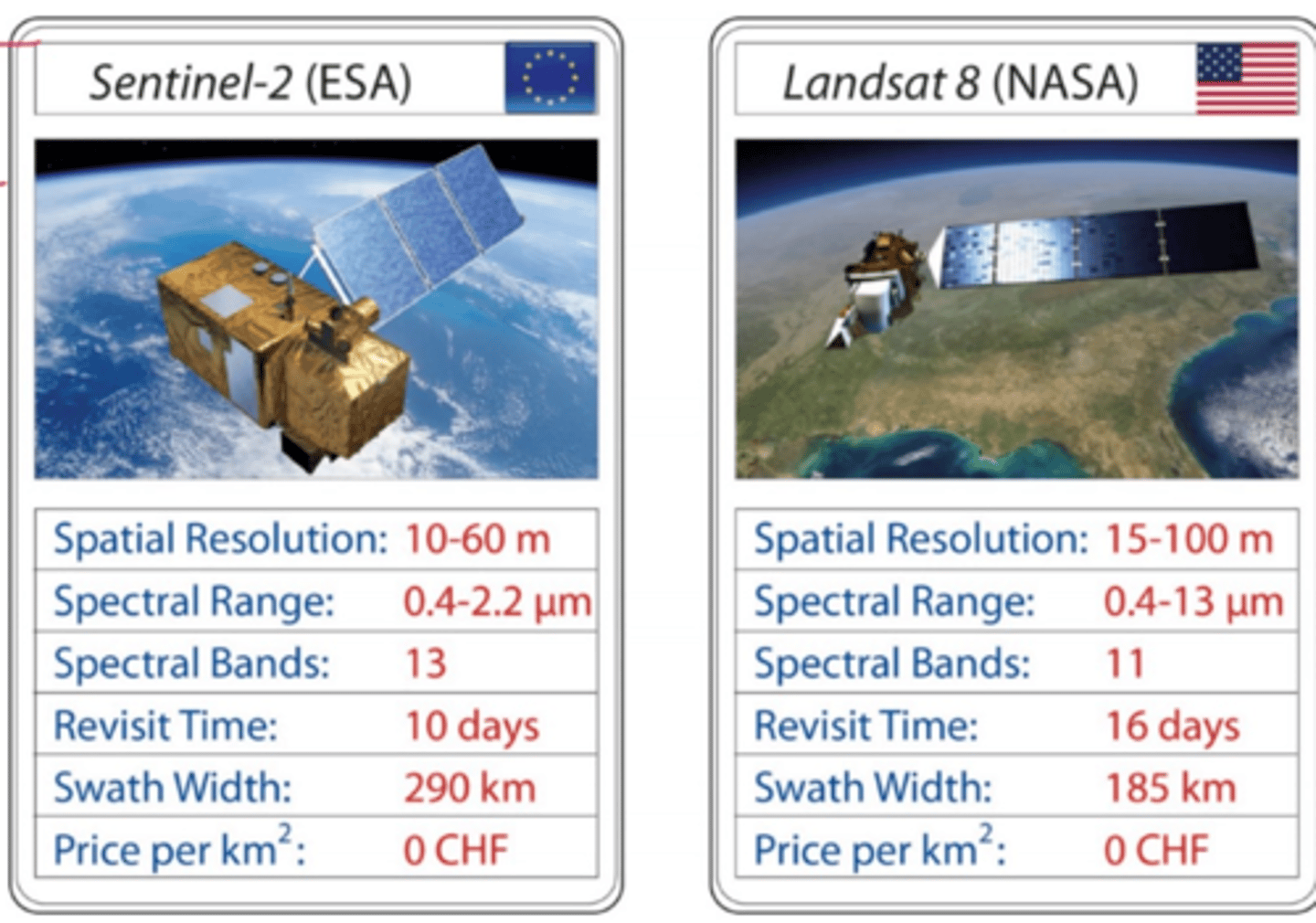
How have lab equipment become smaller and more portable?
- More powerful batteries have been developed
- Electric components have become lighter
- Energy consumption has been reduced
Can you name some portable field equipment
Infrared Spectroscopy
Radiation detection
Why are portable field equipment good?
They save time as results are available immediately, and it is no longer necessary to wait for lab results to be received.
What is bioleaching?
The use of microorganisms such as bacteria or fungi to extract metals from ores
Example of bacteria in bioleaching
Acidothiobacillus sp.
Description of bioleaching
Acidophilic bacteria produce acids that dissolve the metals, allowing for the extraction of metals such as copper, zinc, and gold from low grade sources.
How can the metals in the solution produced by bioleaching be extracted?
- Electrolysis
- Carbon filters
What is phytomining?
Some plants can absorb metal ions from soil/water and concentrate them in their leaves
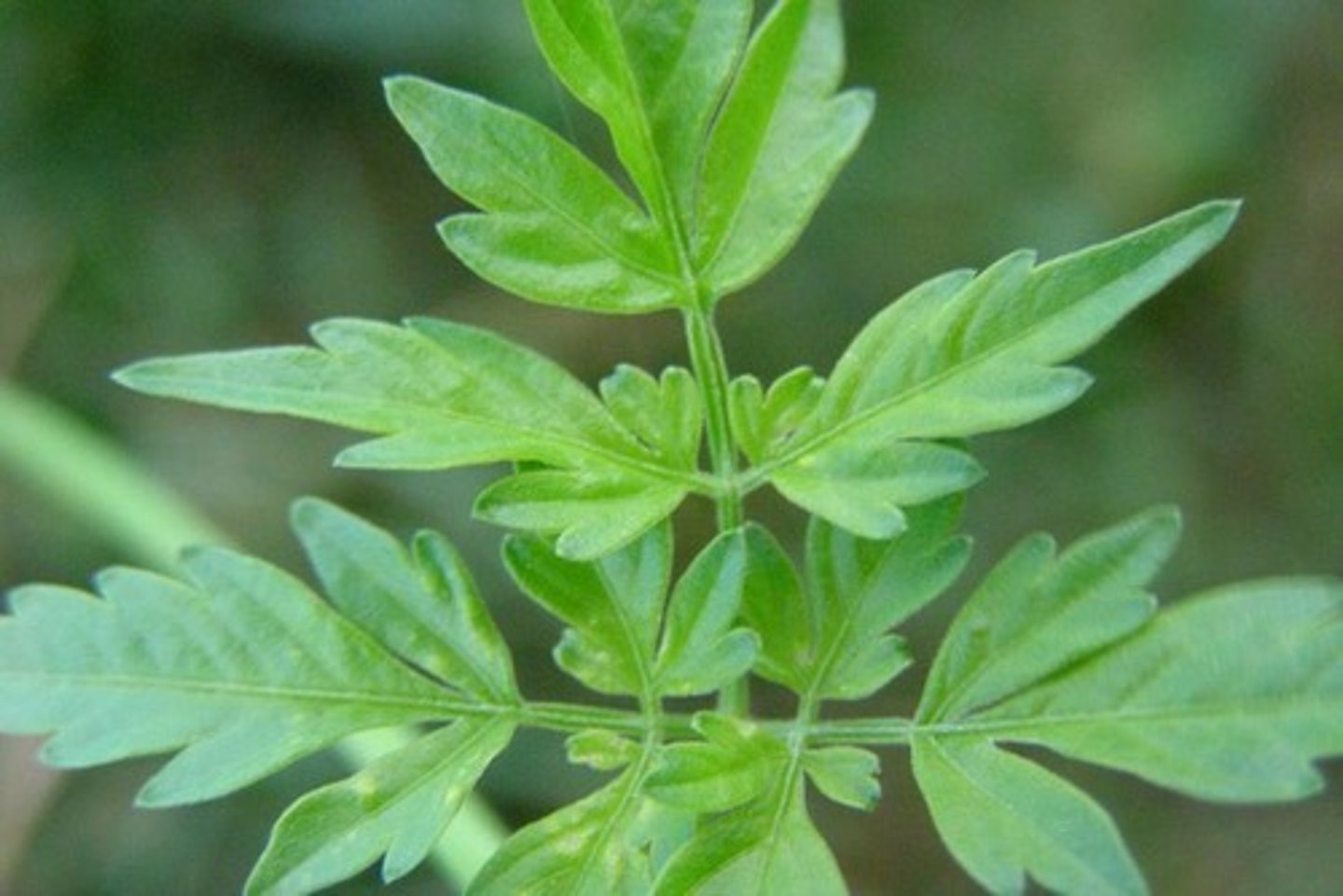
Description of phytomining
Some plants can absorb metal ions from soil/water and concentrate them in their leaves
Plants are then harvested and burned
The metals in the ash and then extracted by dissolving the ash in acids, then separating metals via electrolysis or iron displacement
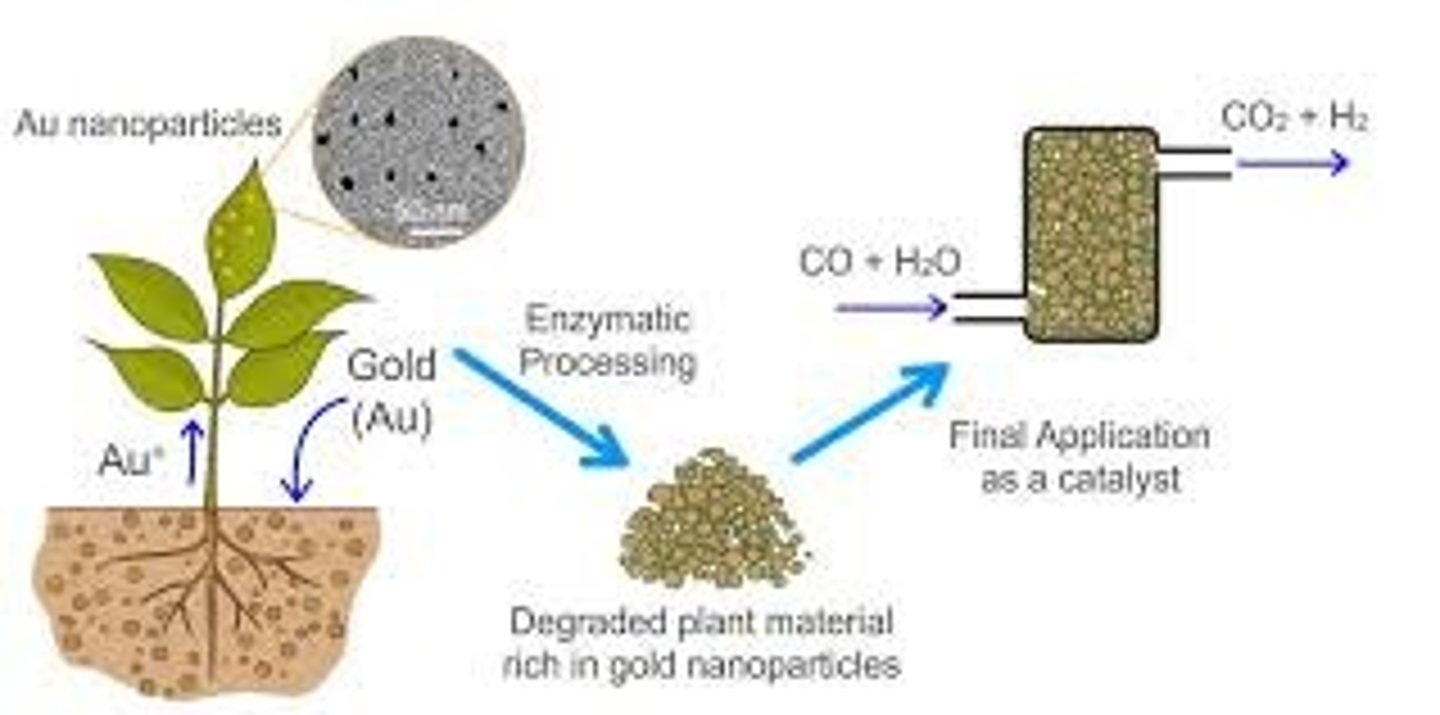
What can phytomining be used for?
Decontaminating polluted sites
What is leachate collection?
Leachate is collected and then recirculated through the spoil heaps.
Each time it goes through, the leachate dissolves more metal ions from the spoil heap.
As a result, the concentration of metal ions in the leachate becomes higher, meaning it contains more dissolved metals.
Why is leachate collection good?
Uses waste spoil heaps.
Reduces problem of leachate drainage, eg going into water ways
What is polymer adsorption?
Metal ions dissolved in seawater will adsorb onto the surface of some polymers and can be collected later.
Synthetic polymers can be used, as can natural polymers such as shells and shrimp chitin.
What metals does polymer adsorption extract?
Uranium
What is cradle to cradle design?
The design of products so that the materials used are able to be reused at the end of their useful lives
What does cradle to cradle design include?
The easy separation of components and identification of materials
Examples of Cradle to Cradle design?
A disposable cup or wrapper made entirely out of biological materials.
When the user is finished with the item, it can be disposed of and returned to the natural environment; the cost of disposal of waste such as landfill and recycling is greatly reduced.
Why is mineral exploitation controlled?
All mining activities impact on the environment, but good site management and post-mining restoration can minimise problems
Control Methods of the Environmental Impacts of Mineral Exploitation
• Turbid drainage water.
• Spoil.
• Leachate neutralisation.
• Site management.
• Site restoration.
1) Turbid Drainage Water - Why is turbidity bad?
- Suspended solid particles in mine drainage water can reduce light penetration into rivers and lakes
- Sediments can also cover and kill plants & animals
1) Turbid Drainage Water - How can the turbidity of drainage water be reduced?
Sedimentation lagoons
The water stands still for a long enough time for solids to sink, so the outflow water has low turbidity.
2) Spoil Disposal - What is spoil?
- The solid waste material left behind by mining
This includes:
- Overburden material
- Unwanted material extracted with the mined mineral
- Solid wastes from the chemical processing of the mineral
Why is spoil bad?
- Aesthetics: Spoil heaps are ugly.
- Stability: A lack of surface compaction reduces surface stability, and leads to erosion.
- Waterlogged: If a spoil heap is waterlogged, it becomes unstable. This happened in Aberfan, South Wales, 1966, when a coal mine spoil heap slid into a village, killing 144 people (mainly children) in the primary school.
How is spoil managed and disposed of?
- Landscaping can make the spoil look more natural and blend in with the surrounding area
- Instability and erosion can be reduced by landscaping to reduce gradients and by adding soil, nutrients, and by planting with trees or other vegetation.
- The risk of landslides are therefore reduced by spoil heap drainage.
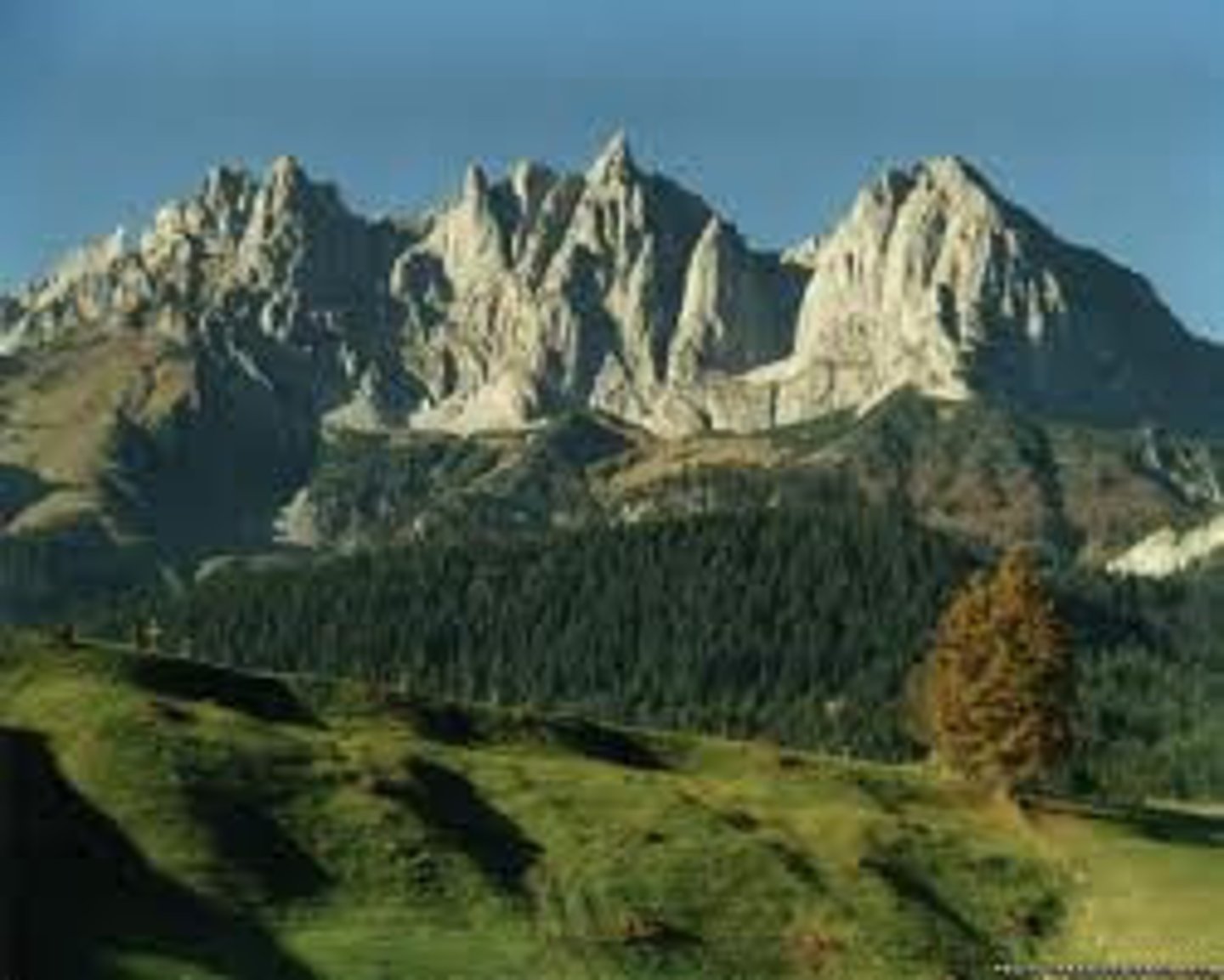
3) Leachate neutralisation - Why are leachates bad?
- Rainwater percolating through spoil can dissolve toxic metals and sulphides
- This produces acidic leachate solutions
- Toxic metals that are normally insoluble inside the rock may be dissolved by the acidic leachate solutions and become mobile. Many toxic metals are more soluble under acidic conditions.
How are leachates neutralised to prevent the production of acidic leachate solutions?
- Mine drainage water can be passed through a filter of crushed limestone
- This immobilises the metal and prevents it being carried into rivers
4) Site Management - What happens to the habitats in the site of mineral extraction?
- The surface habitat is removed
- This means there is a loss of species
Why can't animals and plants be moved to unthreatened habitats?
- This has been attempted but is not really successful
- This is because some species cannot be caught of found easily
- Also some species living requirements are unknown
How is the site then managed?
- When mining has ended, habitat restoration is carried out
- New habitats may be created, such as a wetland nature reserve in the mine void
What is an example of site management?
- Many countries (like the UK) are required to restore wildlife after mining
- The Eden Project is located in an old China clay quarry
What are the benefits of this site management?
- Sometimes, the newly created habitat may have greater wildlife value than the habitat that was present before mining
- Mining can have serious impacts on the environment, however these can be minimised by good mine management
5) Site Restoration - How will a site be restored?
The use of the site after mining will depend on:
- Its location
- Its access
- Its topography
- If it has any residual problems such as soil heaps containing toxic waste
Examples of site restoration
Many sand, gravel, and clay pits have been flooded and developed as wetland wildlife reserves
Urban Development site restoration
- Urban development on mine sites may be possible if the ground is stable
- If metal wastes are present, the site may be more suitable more industrial use than housing
Agricultural site restoration
Agriculture may be possible if:
- The landscape is not too steep or uneven
- No toxic materials are present
- If the soil is sufficiently fertile
What is mine viability?
Mine viability is the criteria of geological and economic factors that must be met for a mining operation to be viable
If the ore grade is low, then:
- More rock will have to be mined
- More waste materials (spoil) will be produced
- More energy will be needed for mining and processing
- More pollution will be generated
How does ore purity affect mine viability?
If the purity of the ore is low, then the financial costs of exploitation and environmental impacts will be great.
How does cut-off ore grade affect mine viability?
- There must be a balance between production costs and income for mining to be an economically profitable activity
- The lowest ore purity that can be mined economically using existing technology is called the COOG
- The COOG changes as technology improves and market prices fluctuate
If the market value is high, then...
COOG decreases
If the market value is low, then...
COOG increases
If there is improved extraction technology, then...
COOG decreases
If there is high energy costs, then...
COOG increases
How does chemical form affect mine viability?
- It affects the ease of chemical extraction of the metal
- For example, aluminium can be extracted from bauxite (AlO), but not from clay, even though clay is more abundant
What is overburden?
The rock that lies above a mineral deposit
How does overburden affect mine viability?
- Hard overburden may require blasting, increasing costs
- Loose overburden may increase the risk of landslides, forcing the mine void to be landscaped at a more gentle gradient. This increases the overall area of the mine
How does hydrology affect mine viability?
Higher precipitation or impermeable rocks below may increase drainage costs
How do transport costs affect mine viability?
Transport costs are affected by:
- The distance to the market
- The ease of bulk transport
- The presence of suitable existing transport infrastructure
- Whether the bulk of the mineral has been reduced by processing
How does market economics affect mine viability?
- The market demand & sale value of minerals control the economic viability
- The market price is controlled by the demand for the mineral, how much is produced, and the costs of extraction and processing
- The amount that can be supplied increases slowly, but demand increases quickly and falls quickly
- So, when demand does not match the supply, prices can fluctuate widely
What does remote sensing mean?
Gaining information without taking direct samples
What types of remote sensing are there?
- Satellite surveys
- Aircraft surveys
- Ground-based surveys
Are large scale surveys good?
Disadvantages :
- Expensive
Advantages:
- Cost effective
- Provides lots of info at a relatively low cost per unit area that is surveyed
IR Spectroscopy
- Minerals emit IR radiation at different wavelengths
- IR Spectroscopy can pass IR radiation through a sample and record the wavelengths that were absorbed and to what extent, allowing us to identify the minerals
Gravimetry
- Gravimeters detect variations in gravity caused by variations in density and mass
- Igneous rocks usually have more dense sedimentary deposits
Magnetometry
- Magnetometers detect rocks that are more magnetic, such as iron ore magnetite, and tungsten ores and cobalt
Seismic Surveys
- Soundwaves are produced by controlled explosions or by a seismic vibrator on the surface
- The echoes can give information about the depth, density, and the shape of rock strata
Resistivity
- The measurement of difficulty with which electricity passes through a material
- Sedimentary rocks have lower resistivities than igneous rocks, because they have higher water contents
Trial Drilling
- The process of digging holes in the ground to find out what minerals might be there.
- The most expensive technique per sampling site
- However, it is the only method that actually produces samples of the rocks underground
Chemical Analysis
Lab tests confirm the chemical composition and purity of minerals in the rock samples
Satellite Imagery
- Captures pictures of the Earth's surface from space
- This helps geologists identify potential areas where valuable minerals might be found based on different characteristics like rock formations, soil patterns, and vegetation signatures.
What does Lasky's Principle state?
As the linear purity of a deposit decreases, there is a logarithmic increase in the amount of the material that is included.
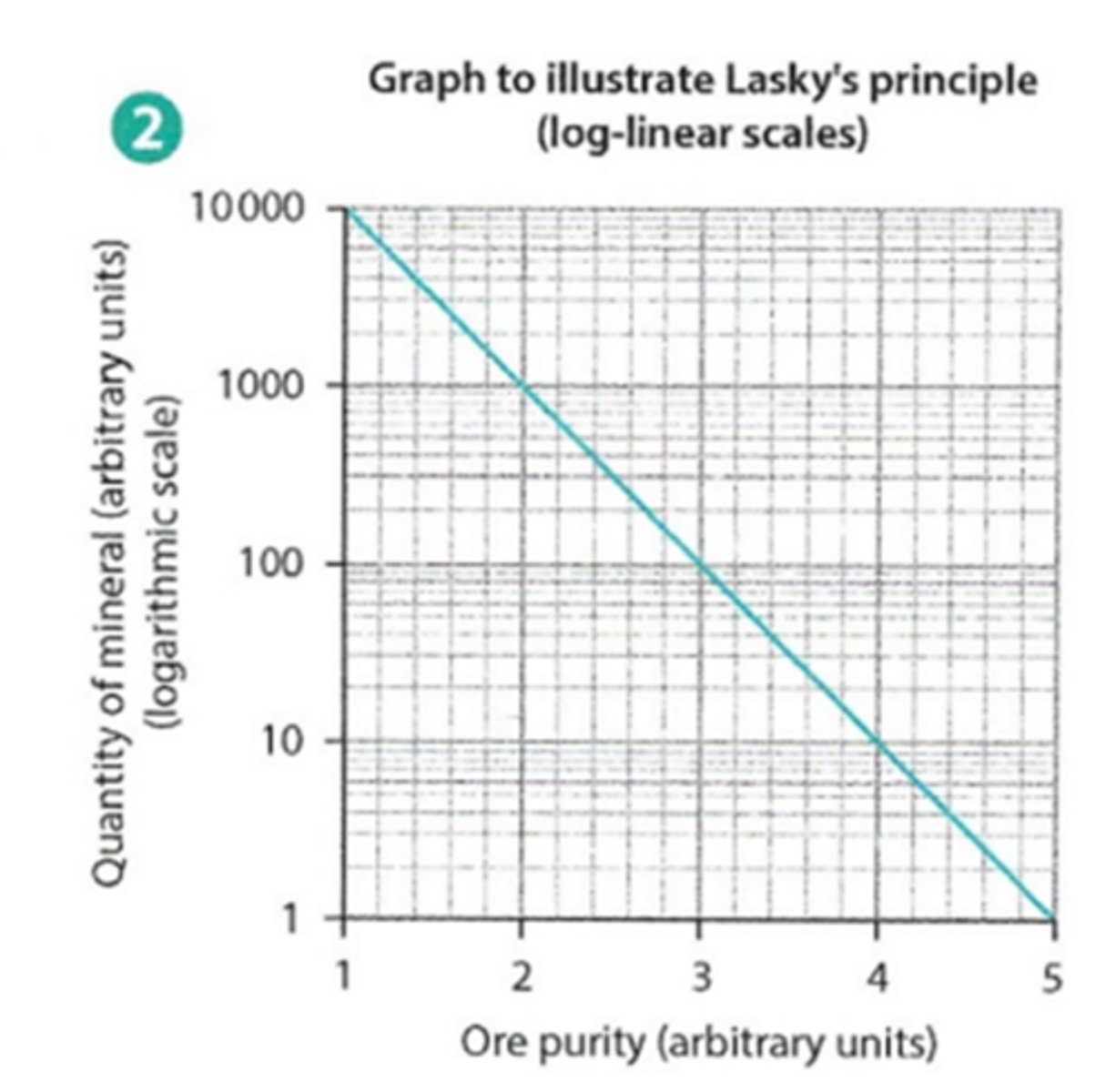
Why is exploiting low grade deposits good?
It results in a large increase in the reserves that can be exploited
What is the major problem with future mineral supplies?
- Methods need to actually be developed to exploit the low grade deposits.
- We also need to predict when these deposits are likely to become exploitable in the future, which involves many uncertainties and estimates.
What does COOG mean?
Cut off ore grade
The minimum concentration of valuable minerals within a deposit that makes it economically feasible to extract and process the ore for profit.
How can mineral deposits in the crust be categorised?
- Whether the technology exists to exploit them
- Whether the exploitation is economically viable
What are stocks?
The extent of resources that exist in the lithosphere.
What do stocks include?
Minerals that can be exploited now
Minerals that will be exploited when prices rise or when new technologies are developed
Minerals that will never be technologically or economically exploitable
What are resources?
All materials that can theoretically be extracted and exploited
What do resources include?
Minerals that can be exploited now
Minerals that cannot be exploited now but if there are realistic increases in prices or improvements to technology, they could be extracted in the future
What are reserves?
The portion of a mineral resource that can be realistically and economically mined.
What do reserves include?
Minerals that can be exploited now, economically, using technologies
Are reserves finite?
No. The resource is finite, but if there are changes in market price or extraction technologies, then reserves can increase.
What happens if the market price fall?
The reserves may decrease
What is the relationship between reserves, resource, and stock?

What is the effect of technology on reserves and resource?
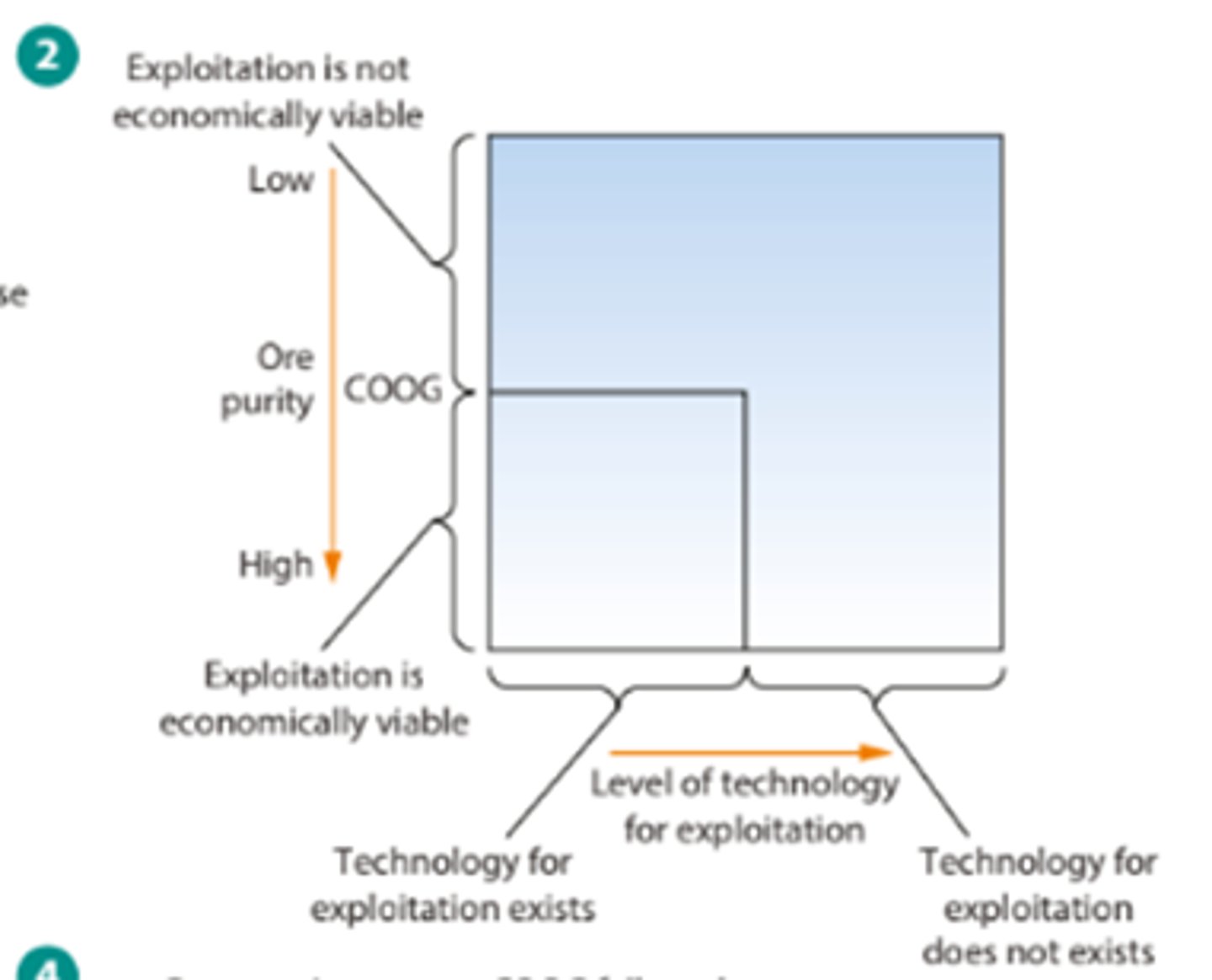
How do changes in technology and COOG affect the reserves?

Why is gaining information on the mineral to be mined expensive?
Mining companies have to plan ahead to prepare the mine and gain detailed info of the mineral to be mine. Methods to gain this info, such as trial drilling, is expensive.
What will mining companies do instead?
Deposits that won't be exploited in the near future will be investigated with cheaper methods. These provide less detailed info